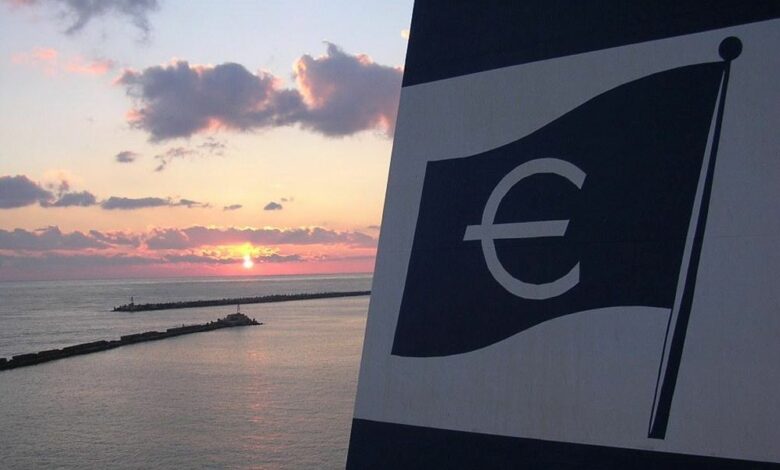 [[{“value”:”
[[{“value”:”

As the FuelEU Maritime regulation enters into force, the shipping industry may be looking at a surprising upside. Instead of acting solely as a cost driver, the regulation could create a net financial gain, potentially around €250m ($280m), according to a recent analysis by maritime data and compliance firm OceanScore.
“FuelEU isn’t just another penalty,” said Albrecht Grell, managing director at OceanScore. “It’s structured in a way that can push money back into parts of the industry — but only if you understand where and how that happens.”
OceanScore’s analysis focuses on the balance of GHG intensity compliance under FuelEU. The initial compliance deficit across vessels exceeding the regulation’s threshold is estimated at around 2.1m tons of CO₂e, while more efficient vessels — mainly LNG and LPG carriers — generate a surplus of about 1.3m tons of CO₂e. That leaves a net compliance gap of roughly 0.8m tons, which is likely to be closed using biofuels. These fuels have a lower calorific value and higher price point, but offer the advantage of emissions reduction credits and corresponding savings under the EU ETS.
At today’s prices, factoring in the ETS phase-in rate of 70% and current exchange rates, covering this compliance gap via biofuels is expected to cost the industry around €200m, or €230 per ton of CO₂e.
The other half of the story is about how emissions-related costs are passed on, especially in container, ferry, and cruise segments, which together make up nearly 50% of total emissions. In many cases, emissions surcharges are now included in COAs, and some are linked to FuelEU’s penalty levels.
“It’s not a universal practice, but we’ve seen a significant number of surcharges that shadow the penalty rates,” Grell said. “And when you run the numbers, even conservatively, the revenue side starts to look pretty interesting.”
OceanScore’s model assumes that just half of operators apply surcharges at two-thirds of the penalty rate, which equates to about €640 per ton of CO₂e. Under these conditions, total additional revenue could reach €450m.
Subtracting compliance costs leaves a potential net gain of €250m— although how sustainable that is remains uncertain.
“Windfalls like this don’t last forever,” said Grell. “But in the short term, there’s clearly value on the table. The trick is knowing how to capture it — and who actually does.”
Owners, charterers, and shipmanagers all have different exposure to compliance costs and different leverage in passing them along.
“Shipmanagers are in a uniquely exposed position,” said Grell. The additional cost, for tools, processes, and reporting systems could quickly reach €4,000 per vessel annually, according to OceanScore estimates.
“Managers shouldn’t be shy about asking for their share of this upside.” Grell said. “They’re doing the heavy lifting, and it’s in everyone’s interest that they’re properly resourced to do it well.”
The post How to profit from FuelEU Maritime appeared first on Energy News Beat.
“}]]
